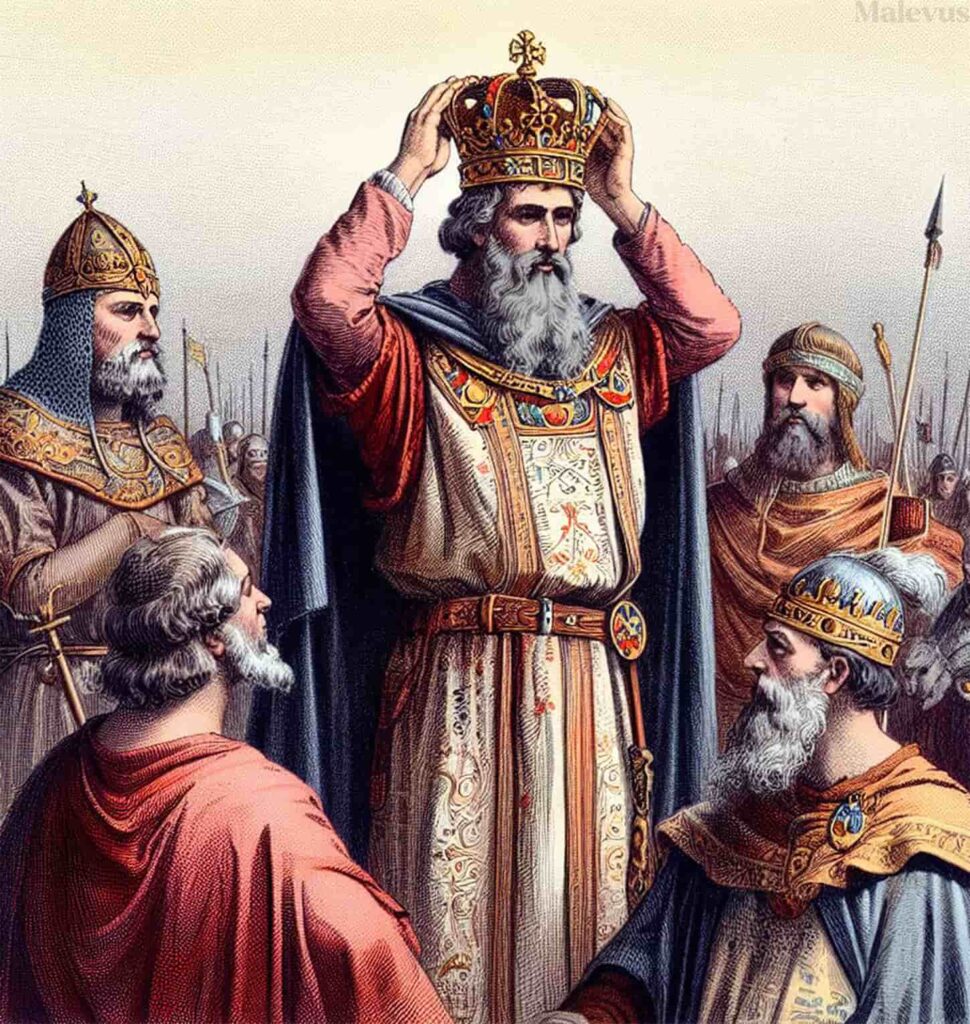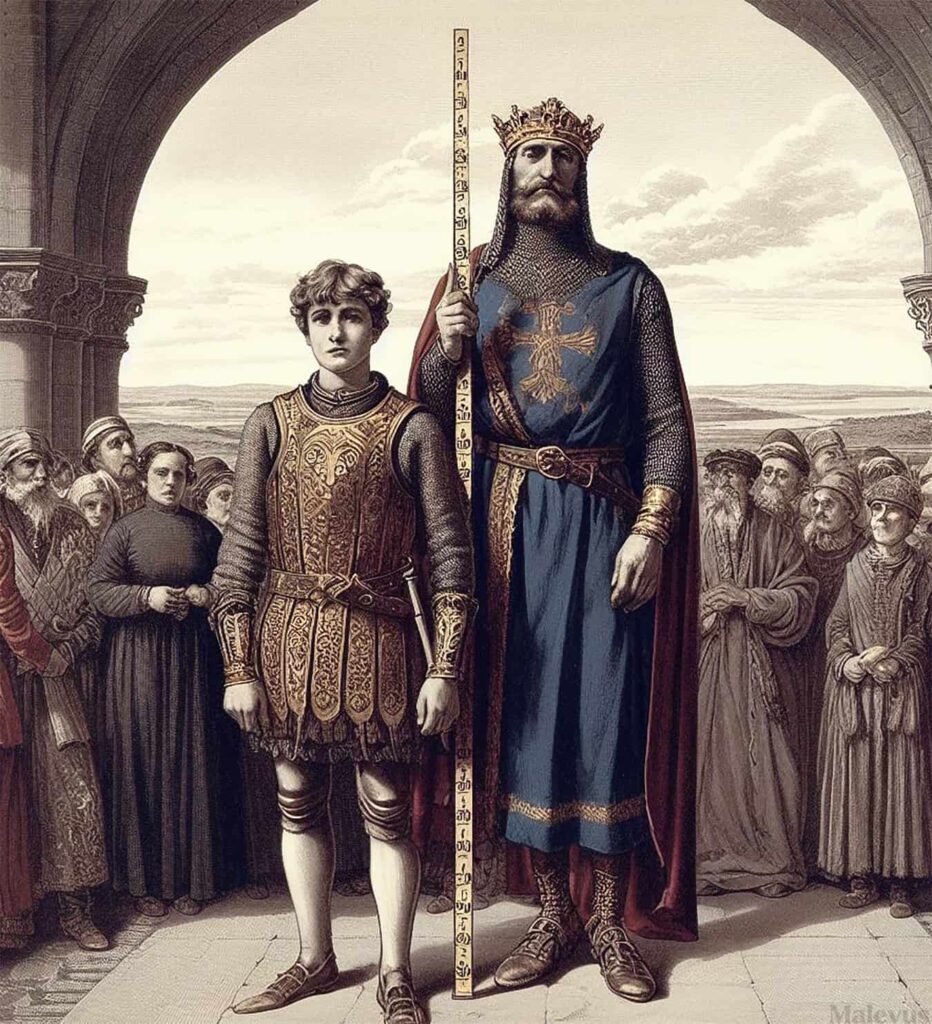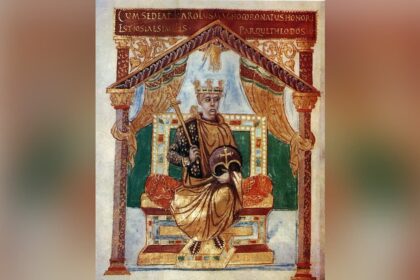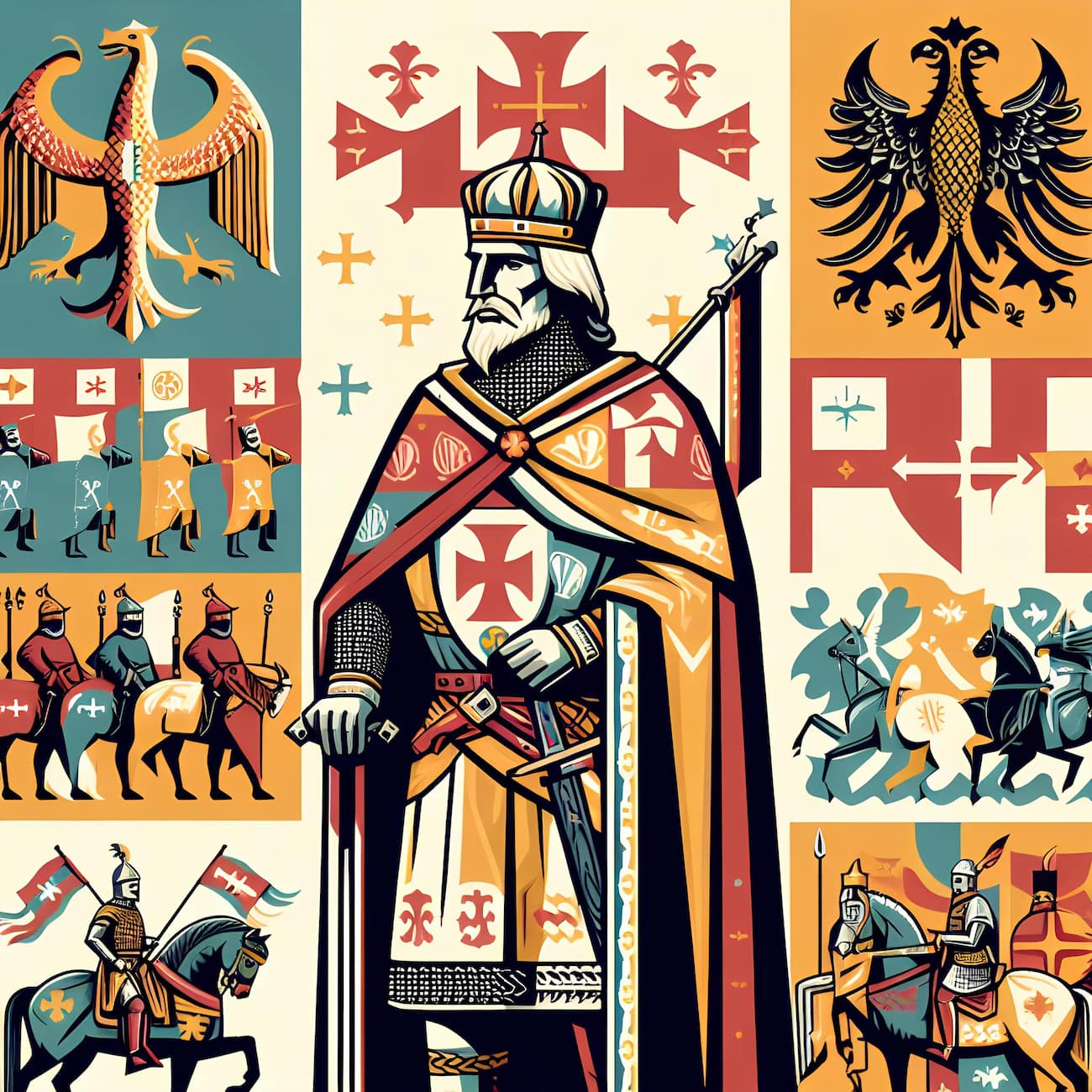How tall was Charlemagne (742–814)? Charlemagne, or Carolus Magnus in Latin, reigned as king of the Frankish Empire from around 747 until his death in 814. There is no portrait of Charlemagne that has remained from his period in history. How well do we know his physical characteristics? Charlemagne was known to be quite tall, especially when compared to the average height of the Middle Ages and the relatively short stature of his father, Pepin the Short. According to scientific estimations, Charlemagne’s height was around 6 feet and 0.5 inches, or 1.84 meters.
- Historical Sources Regarding Charlemagne’s Height
- Scientific Evidence on How Tall Was Charlemagne
- His Physicality
- How Tall Was Charlemagne Compared to People of His Time?
- Historical Figures Who Were Taller Than Charlemagne
- Charlemagne’s Physical Presence in Medieval Europe
- Why Was Charlemagne Called “the Great”?
- Why the Length of Feet Was Different in Medieval Times
Historical Sources Regarding Charlemagne’s Height

After spending several years in Charlemagne’s court, the Frankish scholar Einhard penned a revealing portrait of the emperor in his Vita Karoli Magni. According to that, the Frankish King was 7 feet tall. However, according to the standard foot measurement (12.6 in / 32 cm) of the time, Charlemagne would have been 7 feet and 4.2 inches (2.24 m) tall.
An extract from his account reads as follows:
Karl [Charlemagne] was sturdy and strong, with a tall stature that was not excessive. It is well known that his height has been seven times the length of his foot. He had a round head, large and lively eyes, a slightly long nose; he had beautiful gray hair and a cheerful and joyful face. His appearance was always impressive and dignified, whether he was standing or sitting. Although his neck was somewhat thick and short, and his belly protruded slightly, these flaws were not very noticeable given the symmetry of his limbs. His gait was confident, his entire posture masculine, and his voice clear, although not as powerful as one might expect from his size. […] He dressed in the national attire of the Franks: a linen shirt on his body, linen trousers covering his thighs; over that, he wore a tunic trimmed with silk; his lower legs were wrapped in leg bands. He then bound his calves with bands and wore boots on his feet. In winter, he protected his shoulders and chest with a vest made of otter or marten fur. Over that, he wore a blue cloak. He always wore a sword belt [See: Sword of Charlemagne] with a hilt and sheath made of gold or silver.
— Einhard, The Life of Charlemagne (Vita Karoli Magni).
Scientific Evidence on How Tall Was Charlemagne

Not as many people in the early medieval era, including members of royalty, had their heights recorded as they do now. But for centuries, Charlemagne’s height was known to be between 6 feet, 3.5 inches (1.92 m) and all the way through 7 feet, 4.2 inches (2.24 m).
However, research on Charlemagne’s preserved bones and the size of his tomb has revealed that he was actually 6 feet (1.84 m) tall rather than the 7 feet and 4.2 inches (2.24 m) that Einhard claimed. This is still making the Father of Europe taller than usual for his day.
It’s safe to assume that Charlemagne was a cut above the typical man of his day. In 2014, the bone study conducted by Swiss researcher Frank Rühli indicated that Charlemagne’s height was 6ft 0.5in (184 cm), much above the normal male height of 5ft 6.5in (169 cm) at his time. To put things into perspective, Charlemagne would have to be 6ft 4.8in (195 cm) tall today to create the same level of height difference.
His Physicality
Despite his height, Charlemagne was slim in build. According to the same research that used CT scans, MRIs, and macroscopy, the Holy Roman king weighed roughly 172 pounds (78 kg), or 22 on the body mass index scale.
Thus, Charlemagne was no behemoth, but rather a skinny guy. His title “The Great” reflected his political greatness rather than his tall stature. But it’s still reasonable to believe that the Frankish king’s elevated perspective was helped along by the man’s lofty height.
How Tall Was Charlemagne Compared to People of His Time?

The medieval people were shorter, but they were not dwarves. According to another study, following the Norman Conquest in 1066, the average height of a man living at the end of the early medieval period was around 5ft 7.7in (172 centimeters). Today, this figure is around 5 feet 11 inches (180 cm).
Thus, when compared to the typical man of his day, Charlemagne stood around 4.7 inches (12 cm) taller than them.
Charlemagne would still tower above the typical contemporary American by more than 3.5 inches (9 cm), given that the average height of a man in the United States is now 69.1 inches (175.4 cm).
Comparing Charlemagne’s height to that of the ordinary medieval man is like comparing the average height of an American man to that of an Indonesian man, which is 62.2 inches (158 cm).
Historical Figures Who Were Taller Than Charlemagne

Charlemagne has been known for his tall stature for centuries, but he was in no way the tallest ever. Here are some of the other European leaders and historical figures who were taller than the already tall Holy Roman Emperor:
- Edward IV of England, at over 6 feet 4 inches (193 cm), was one of the tallest British rulers on record. In 1461, he overthrew King Henry VI of England and ascended to the throne.
- Peter the Great, the monarch of Russia, was a towering figure at 6 feet 7 inches (201 cm) in height. Between the years 1682 and 1725, he was Russia’s leader.
- James Kirkland, an Irishman, fought for the Prussians among the unusually tall Potsdam Giants unit. One of the tallest soldiers in history, he was reputedly 7 feet, 1.5 inches (217 cm) tall.
- Maximinus Thrax (d. 238 AD), was said to have been nearly 8 feet tall. According to ancient Roman sources, his sandals were twice as big as the standard army size. Thrax fashioned a thumb ring out of his wife’s bracelet.
Charlemagne’s Physical Presence in Medieval Europe

Were leaders of other nations or people around the Frankish King also amazed at Charlemagne’s tall stature? This is a valid question considering the relatively short height of some of the most dominant figures of history, such as Hitler, Alexander the Great, Stalin, Genghis Khan, Julius Caesar, or even Napoleon.
The physical size of Charlemagne was well known among his contemporaries, especially considering the era in which he lived. In fact, contemporary historians like Einhard (770–840) noted his towering stature as a contributing factor to his intimidating persona.
For instance, scholars in Charlemagne’s court, such as the Anglo-Saxon Alcuin (d. 804), remarked on Charlemagne’s tall height. The scholar was a close friend of Charlemagne’s only sister, Gisela, Abbess of Chelles. Charlemagne is also mentioned in Theophanes’ (d. 817) chronicles, although he makes no reference to the emperor’s height. The tall king died on January 28, 814, in Aachen.
Why Was Charlemagne Called “the Great”?
Charlemagne, or “Charles (Karl) the Great,” was not called “The Great” because of his tall stature. Charlemagne earned the title “the Great” not because of his size but because of the profound influence he had on European history. His influence on European politics, culture, and religion, as well as his military victories, helped him achieve this title.
The name “Charlemagne” comes from a combination of the names “Charles” and “magne:”
- Charles: This name is derived from the Old High German word “karlaz,” which means “free man” or “man of the people.” It was a popular name among Germanic peoples and appeared in a number of distinct forms throughout the Germanic languages. The Latin version of Charles is “Carolus” and Charlemagne is for Carolus Magnus.
- Magne: The Latin adjective magnus, meaning “great” or “large,” is the source of the English noun “magne.” It was a common way to express admiration for someone of stature or importance.
Why the Length of Feet Was Different in Medieval Times
One foot is around 12 in. or 30.48 cm today, and back in the days of Charlemagne, the length of a foot was a bit longer. Was it because people’s feet were longer at that time than they are today? Probably not. While Charlemagne was alive, one foot measured 12.6 in., or 32 cm.
This is because the precise length of a foot has changed through time and across geographic locations. Different towns or areas in medieval Europe could have employed different standards due to regional variances in measures. This was because of the absence of universally accepted standards for measuring.
The length of one foot began to be standardized throughout the Renaissance. The British Imperial Measurement System established the foot at 12 inches.
References
- The Life of Charlemagne, Translator: A. J. Grant.
- Highs and lows of an Englishman’s average height over 2000 years | University of Oxford
- Charlemagne – By Matthias Becher – 2003
- The Charlemagne Legend in Medieval Latin Texts






